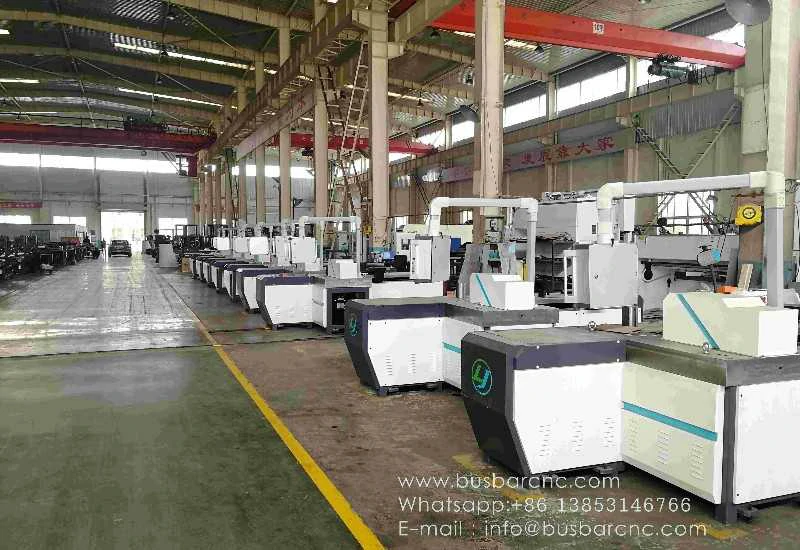Busbar Bending Machine Price – Find out the market price and cost-effectiveness of various busbar bending machine equipment
3 min read
Busbar bending machines are essential equipment for the efficient fabrication of busbars used in electrical power distribution systems and other industrial applications. When considering the purchase of a busbar bending machine, it’s crucial to assess both the market price and cost-effectiveness of various equipment options. In this article, we will delve into the current market prices of busbar bending machines and explore their cost-effectiveness based on their features, capabilities, and long-term benefits.
Market Price Analysis
The market price of busbar bending machines can vary significantly based on several factors such as the machine’s capacity, bending range, automation features, and brand reputation. Generally, the price range for busbar bending machines can start from a few thousand dollars for basic manual models and go up to tens of thousands of dollars for fully automated, high-capacity machines from reputable manufacturers. The specific price of a busbar bending machine also depends on its bending force, the thickness and width of busbars it can handle, and the complexity of its control system.
Key Features and Capabilities
When assessing the cost-effectiveness of busbar bending machines, it’s essential to consider their key features and capabilities. These include the bending force, bending range, material handling capacity, degree of automation, and the precision and repeatability of bends. Machines with higher bending forces and broader bending ranges generally come with a higher price tag, but they offer the capability to handle a wider range of busbar sizes and materials, thus providing greater flexibility and long-term value.
Automation and Productivity
Automation features play a significant role in determining the cost-effectiveness of busbar bending machines. While manual or semi-automatic machines may have a lower initial purchase price, they often require more labor and time to operate, resulting in higher overall operational costs. On the other hand, fully automated machines with CNC controls and robotic handling systems offer higher productivity, precision, and efficiency, reducing labor costs copper bending machine and increasing overall output. Evaluating the balance between initial investment and long-term productivity is crucial in determining the cost-effectiveness of different busbar bending machine options.
Energy Efficiency and Sustainability
Another aspect to consider when assessing cost-effectiveness is the energy efficiency and sustainability of busbar bending machines. Modern machines equipped with energy-saving features, such as regenerative braking systems and efficient hydraulic or electric drives, can significantly reduce energy consumption and operating costs over the machine’s lifespan. Furthermore, sustainable manufacturing practices and the use of eco-friendly materials in machine construction can contribute to long-term cost savings and environmental benefits.
Maintenance and Long-Term Reliability
The long-term reliability and maintenance requirements of busbar bending machines directly impact their cost-effectiveness. Machines built with high-quality components, robust construction, and reliable control systems may have a higher initial price but can provide lower maintenance costs and longer service life, resulting in better cost-effectiveness over time. Additionally, the availability of spare parts, technical support, and warranty terms should be considered to assess the overall cost of ownership for different machine options.
Customization and Adaptability
The ability of a busbar bending machine to adapt to changing production needs and accommodate custom bending requirements can significantly impact its cost-effectiveness. Machines that offer easy setup, quick tool changeover, and flexible programming options enable manufacturers to respond rapidly to new orders and production challenges, resulting in improved overall efficiency and customer satisfaction. Customization capabilities also contribute to the long-term value and versatility of busbar bending equipment.
Return on Investment (ROI)
Calculating the return on investment for busbar bending machines busbar processing machine involves analyzing the total cost of ownership, including initial purchase price, operating costs, maintenance expenses, energy consumption, and productivity gains. It’s important to consider the potential increase in production capacity, improved product quality, and reduced labor costs when evaluating the ROI of different machine options. In many cases, investing in a higher-priced, advanced busbar bending machine can yield greater long-term benefits and profitability, making it a more cost-effective choice.
In conclusion, the market price and cost-effectiveness of busbar bending machines are influenced by various factors such as key features, automation capabilities, energy efficiency, reliability, customization options, and return on investment. While lower-priced machines may seem appealing initially, it’s essential to carefully evaluate their long-term benefits and operational costs to determine their true cost-effectiveness. Ultimately, selecting a busbar bending machine that aligns with your production requirements, quality standards, and business goals will result in the most cost-effective solution for your operations.




